In most cases, the length of the Ethernet cable will have no effect on the speed (bandwidth and throughput) and I say that because there are very rare cases when people use Ethernet cables longer than 300 feet. And yes, an Ethernet cable that’s longer than that will start experiencing an increased latency, although almost unnoticeable at the beginning, but it can get really bad as the length increases.
At the same time, there are other factors that can determine whether your cable will alter the speed performance and I am mostly talking about the interference (EMI). Even bending the cable above a certain angle can have an impact on the performance of the cable, so let’s explore a bit more this topic and see how long an Ethernet cable should be and how to keep in good conditions pretty much any network cable you may be using.
Differences between Ethernet cables
For this comparison, I am going to focus only on the LAN types of Ethernet over twisted pair cables.
| Cable | Name | Maximum Distance | Maximum Supported Speed |
| CAT 5 | 100BASE-TX | 328 feet (100 meters) | 100Mbps |
| CAT 5 | 100BASE-T | 328 feet (100 meters) | 1,000Mbps |
| CAT 5E | 2.5GBASE-T | 328 feet (100 meters) | 2,500Mbps |
| CAT 6 | 5GBASE-T | 328 feet (100 meters) | 5,000Mbps |
| CAT 6A | 10GBASE-T | 328 feet (100 meters) | 10,000Mbps |
| CAT 8 | 25GBASE-T | 98 feet (30 meters) | 25,000Mbps |
| CAT 8A | 50GBASE-T | 98 feet (30 meters) | 40,000Mbps |
As you can see, the overwhelming majority of people are going to use CAT5E or CAT6 cables which can go up to 328 feet and it is a very long distance to cover even in larger houses. That’s why most people brush off the possibility of network speed problems due to the length of the cable. But it can happen and how much of an impact would you see?
Let’s talk about propagation delay
I know that a lot of you think that the electrical signal travels at the speed of light throughout the Ethernet cable, but that’s not actually accurate. Instead, the speed is about two thirds the speed of light, which is still plenty enough. And it takes us to the signal propagation delay which is just the time it takes the signal to arrive at its destination.
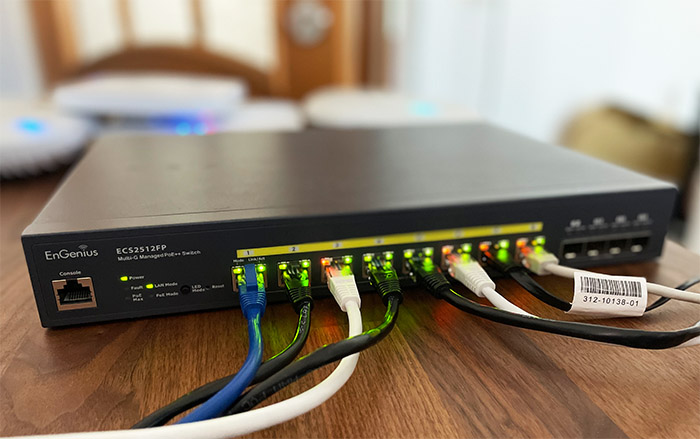
A CAT 5E UTP (unshielded) cable will have a propagation delay of about 5 nanoseconds every 3.28 feet (1 meter) so, if you go past the maximum suggested length, it’s going to be somewhere near 500 nanoseconds. Which is still negligible. But it can add up if you’re trying to cover miles – you will see though that there are other factors that will also creep in as well.
What about PoE?
Now here’s where things get interesting because PoE will not work above 328 feet (100 meters). And that’s because the Power over Ethernet was designed with the 100m limitation in mind, so going past that length will mean that the voltage will drop leading to an unstable connection to your PoE devices.
Can you still get a reliable PoE connection a bit above 328 feet? Sure, if the cable is high quality, but it’s generally better to keep the Ethernet cable shorter.
Does shielding matter?
The most general solution to EMI (electromagnetic interference) is to use twisted conductors (four pairs) and it has been proven to work over the years. That’s because a normal home or small to medium office doesn’t have the level of interference to impact in a significant way the Ethernet cable performance. Which is why UTP cables are still more common and cheaper than the shielded Ethernet cables.
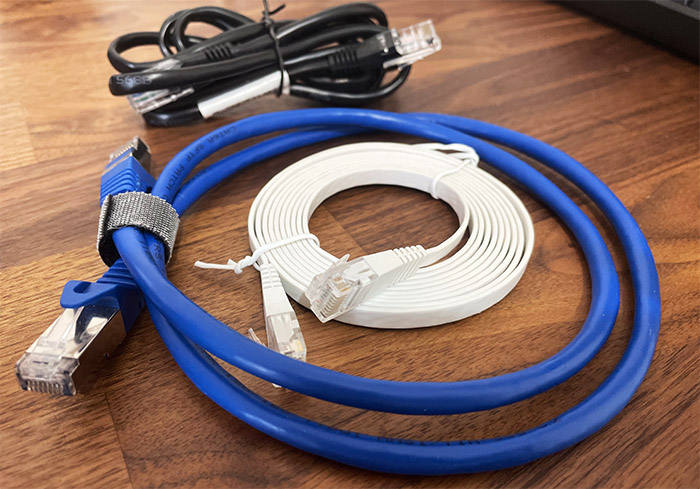
But there are cases where the EMI is far more prevalent, which is usually the case in industrial facilities (large servo motors, generators and so on). So an STP or FTP EThernet cable will prevent the interference from affecting the speed of your network.
The STP cables are the best solution because they usually use wrapped foil (or braided wire) around each of the four groups of conductors, while the FTP Ethernet cables cover all the twisted pairs of conductors in a single shielding layer. Still more effective than UTP, just less than the STP – also less expensive.
So, to tie in with the length of the Ethernet cable, the idea is that the longer it is, the more chances that it will be subjected to EMI. This is why it’s better to use shorter cables in areas where you know there can be an impact from EMI (also, it’s best to invest in at least FTP Ethernet cables).
Flat vs round Ethernet cable
I admit I like the flat Ethernet cables a lot more than the round ones because they’re easy to carry around and I can better wrap and store them in a drawer after I’m done testing a specific device. But I also know that most of them are limited to only about 100 feet (30 meters) which is a third of the round Ethernet cable.
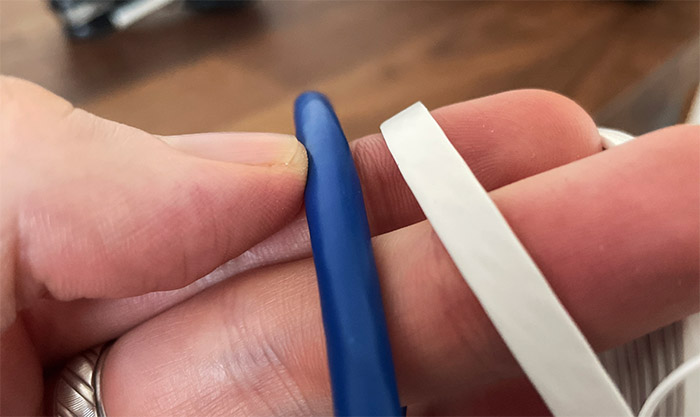
That’s because the twisted conductors stand side by side, lacking any insulation or shielding. This makes this type of cable far more susceptible to EMI and heat-related problems (bet you didn’t know that temperature has an impact on the speed performance of an Ethernet cable).
So, the idea is to use round shielded Ethernet cables if you plan to go above 100 feet, but I won’t deny you the guilty pleasure of using flat Ethernet cables over shorter distances.
Does the temperature matter?
It does. Most cables will remain operational when the surrounding temperature is between -40 and 167 F (-40 to 75 C) which is within the range where humans can remain alive. But, there is an issue that needs to be taken into consideration and it’s the temperature swings.
Inside a home, it’s normal to have a gradual increase or decrease of temperature, but that’s not necessarily the case outdoors or in a specific industrial environment. So, a proper outdoors-rated Ethernet cable will keep in check better these temperature swings (the water vapors that will enter the cable), while the regular cables (usually hidden behind some PVC conduit) will not survive for long.
The length of the Ethernet cable will also need to be adjusted based on the temperature. The guys at TrueCable actually tested the impact that a temperature above 68 degrees F would have on the cable and which should be the maximum length. And, at the suggested 167 F, it was way below 300 feet and closer to the 200 feet mark, especially for the unshielded cable.
Does bending the cable have any impact on the speed?
Bending a cable at a too sharp angle can and most likely will have an impact on the speed. And the general rule is to follow the guidelines provided by the cable manufacturer since they often do provide a maximum bend radius.
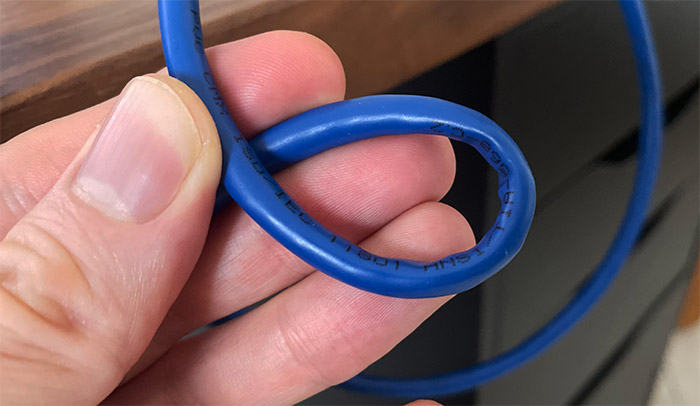
In case they don’t, then just follow the rule of four times the diameter of the cable. There is another aspect that a lot of people ignore and it’s the stretching of the Ethernet cable which usually occurs when hanging a long cable between buildings without any support. Over time, the cable will get crushed under its own weight, so again, use shorter cable or longer, but supported Ethernet cables.
Can an Ethernet switch help with long Ethernet cables?
Yes, it’s possible to extend the reach of Ethernet cables using Ethernet switches. That’s because after each switch, you gain the ability to use another 328 feet of cable and so on. But, be aware that using unmanaged switches will eventually cause connection issues and, when using managed switches, you will be able to see what’s causing those issues.
Perhaps extending the cable once or even twice will work, but going for a mile or more is just asking for trouble – some people suggest to not go above 7 switches due to the Spanning Tree Protocol. The answer to going above 328 feet is to use fiber.
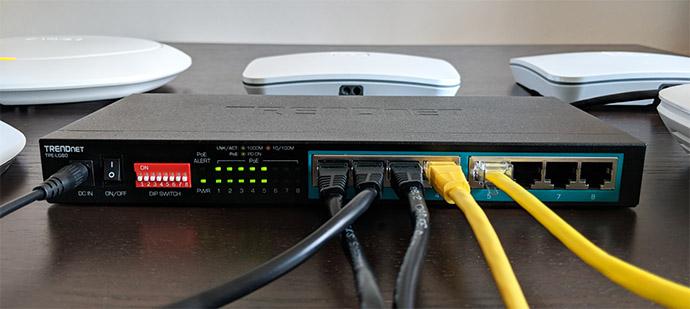
Note: In regards to PoE, it is possible to go above the 328 feet (100 meters) limitation by using special Ethernet switches such as the one from TRENDnet that I tested a few years ago (the TPE-LG80). This switch could push a PoE+ connection up to 656 feet, although the speed would have been severely limited (10Mbps full duplex).
Is it better to use WiFi?
This is a bit of a tongue in the cheek question. And the answer is no, it’s never better to use WiFi over Ethernet cables for many, many reasons. There’s interference, bandwidth limitations, overhead and so on which will heavily impact your network speed. So, for the time being, an Ethernet cable remains the best option for a reliable connection to the Internet (or even for LAN).
Is it better to switch to fiber optics cables?
It depends on the distance that you wish to cover. As we previously discussed, going above 328 feet, it’s better to use fiber. That’s because it’s less prone to interference and the length limit of the Ethernet does not apply to the fiber optics cable which can go for miles.
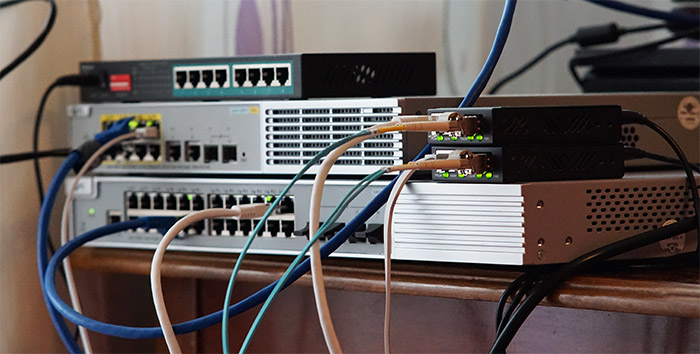
The good news is that it also has gotten cheaper and so did the Ethernet switches that have SFP slots (as well as the modules). So, if you need to interconnect multiple buildings, don’t go the Ethernet route because it’s just not worth it.
Bibliography:
Wikipedia.org
FlukeNetworks.com

Mark is a graduate in Computer Science, having gathered valuable experience over the years working in IT as a programmer. Mark is also the main tech writer for MBReviews.com, covering not only his passion, the networking devices, but also other cool electronic gadgets that you may find useful for your every day life.
